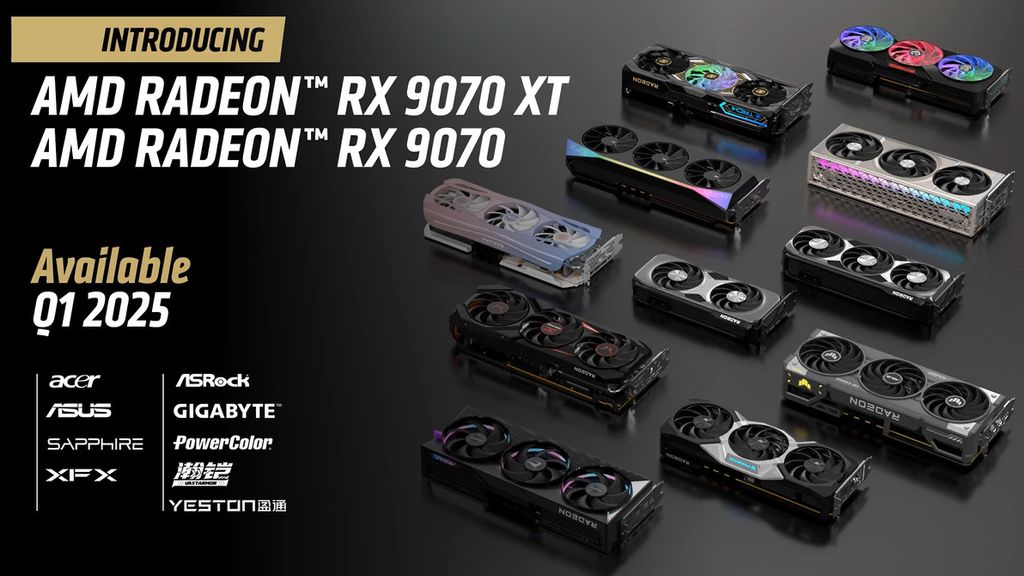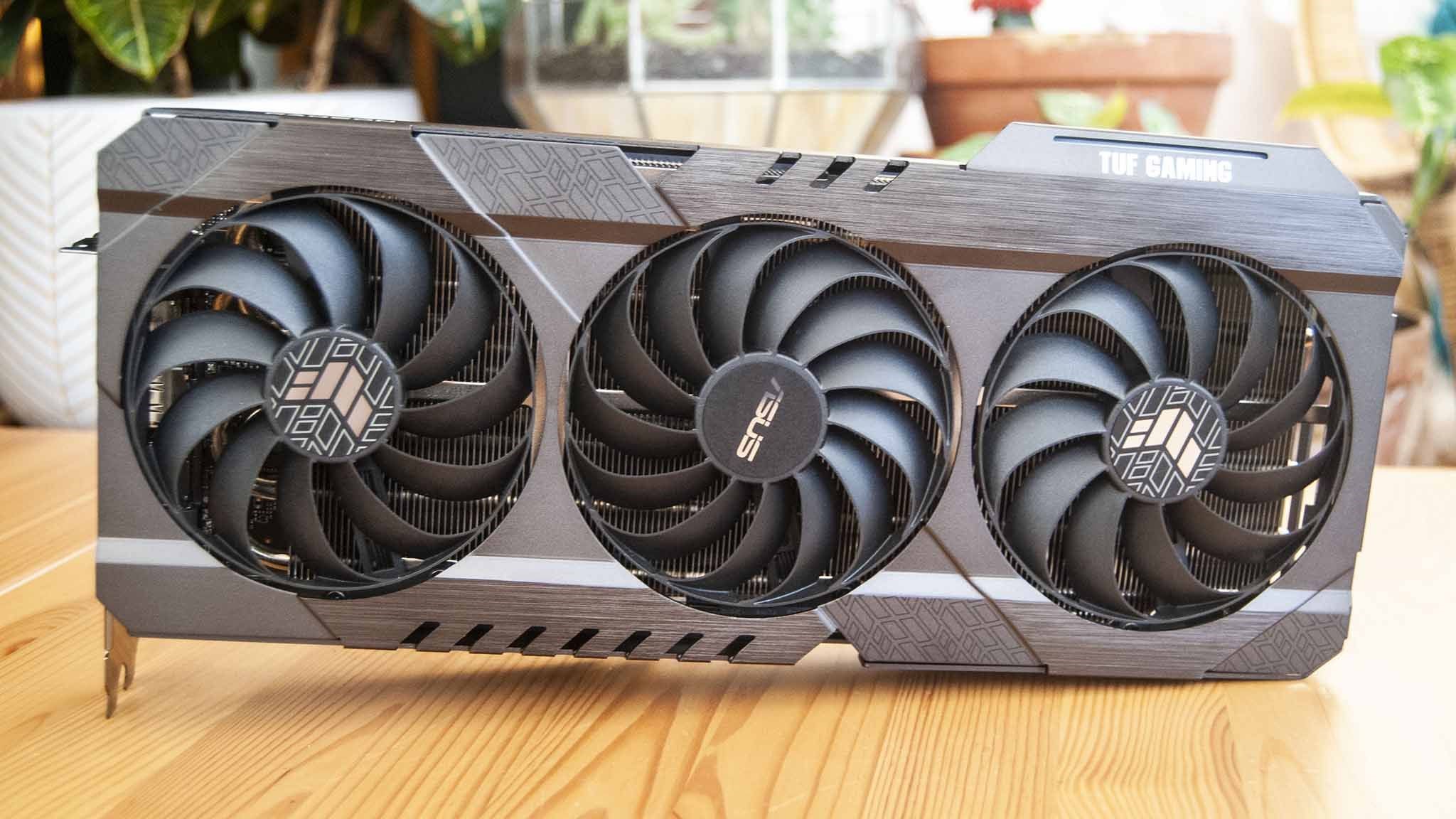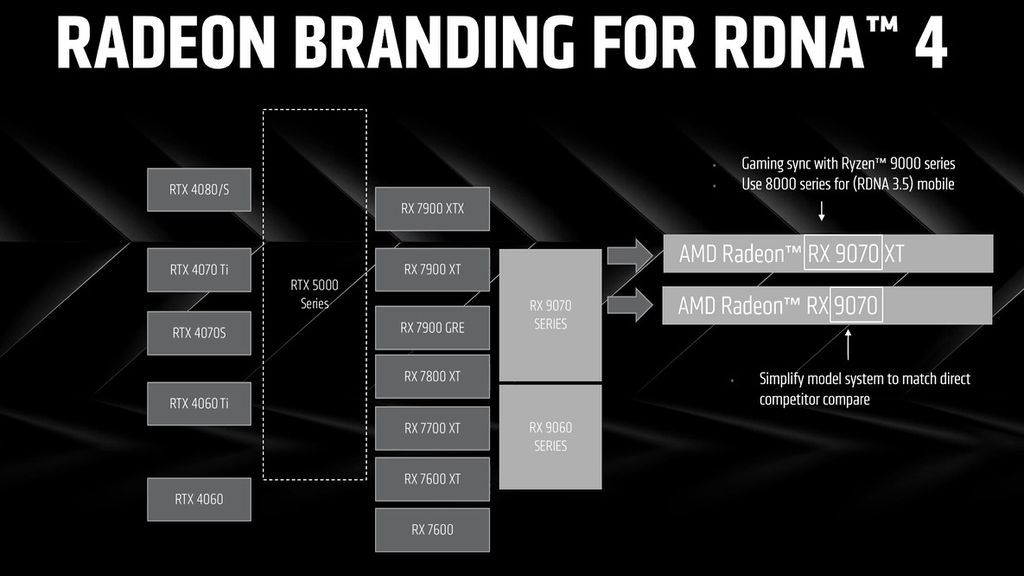One of AMD's mysterious Radeon RX 9000 cards might be a better fit in my gaming PC.
It's not uncommon for an abundance of leaks and rumors to drop while leading into a major event like CES 2025, and that's exactly what happened regarding AMD's RDNA 4 graphics cards.
Everything from naming schemes to potential designs were popping up, and many rumors ultimately became fact when I received AMD's CES press package regarding its new Radeon GPUs for 2025. All major publications received the same Radeon info ahead of AMD's presentation, and we were all left scratching our heads when there was no on-stage mention of RDNA 4.
What happened on AMD's side, and why am I rethinking my decision to upgrade to NVIDIA's upcoming RTX 5070?
Why did AMD pull its RDNA 4 GPU presentation at the last second?

One of the slides from our CES 2025 press kit showing off the new RDNA 4 GPU designs from AMD's board partners.
(Image credit: AMD)
Tom's Hardware's Paul Alcorn spoke with AMD execs David McAfee and Frank Azor following the company's CES presentation. McAfee gave assurances that RDNA 4 is on track in terms of development and expectations, blaming the lack of live coverage on the CES presentation's 45-minute limit. Azor also noted that AMD wanted to see what NVIDIA had to demonstrate at its CES keynote, which turned out to be RTX 5000 GPUs from the "Blackwell" architecture.
I watched NVIDIA's keynote speech live, and when it was announced that the $549 RTX 5070 could match the power of a far more expensive RTX 4090, I earmarked the upcoming GPU as the next piece of hardware going into my gaming PC.
As the hype from NVIDIA's presentation died down, it became clear that a lot of PC enthusiasts weren't too excited about NVIDIA's performance claims. Sure, the RTX 5070 is an improvement over the previous "Ada" generation, but the whole "as powerful as an RTX 4090" leans heavily into AI upscaling and the new DLSS 4.
The RTX 5070 is far from matching the RTX 4090 in terms of raw hardware power, plus it has half of the VRAM at 12GB (though it is GDDR7 compared to GDDR6X). NVIDIA does claim that its upgrade to DLSS 4 will lower VRAM demands, but by how much remains to be seen. Considering the RTX 4060 with 8GB of VRAM gets walloped by new games like Indiana Jones and the Great Circle, having as much VRAM as possible in your GPU doesn't seem like a bad idea as we wade into 2025.
- Mutton
-

 1
1



3175x175(CURRENT).thumb.jpg.b05acc060982b36f5891ba728e6d953c.jpg)


Recommended Comments
There are no comments to display.
Join the conversation
You can post now and register later. If you have an account, sign in now to post with your account.
Note: Your post will require moderator approval before it will be visible.